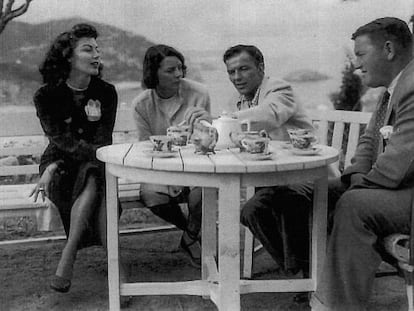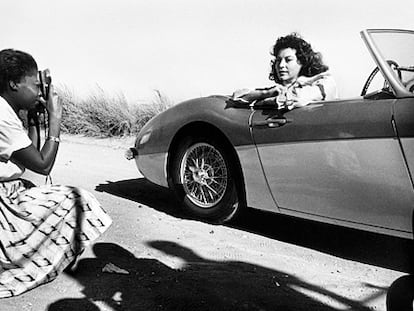Racism, the mafia, Ava Gardner and marvelous music: The biography that Frank Sinatra’s friend didn’t want to write
The journalist Pete Hamill compiles conversations and intimate memories of the singer in the book ‘Why Sinatra Matters’
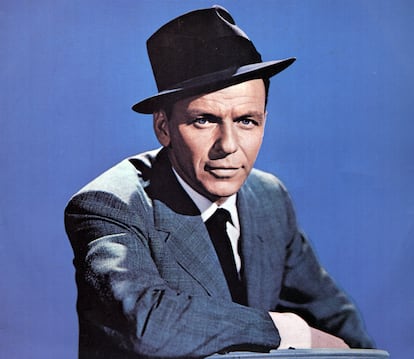
Frank Sinatra died on May 14, 1998 in the Cedars-Sinai Hospital in Los Angeles. He was 82 years old. His glory days were long gone, but his death still moved the world. The Voice was silenced forever.
The news found journalist and writer Pete Hamill, a friend of Sinatra’s, in the Miami airport. He watched passengers crowd before the televisions that showed a CNN special about the artist. Hamill recalled then how, through years of long nights in bars in New York, Las Vegas and Montecarlo, over cigarettes and Jack Daniel’s, Sinatra had tried to convince him to help the singer write his autobiography.
Sinatra’s death was followed by a cascade of articles about the artist. Hamill followed them closely, but he found the coverage empty. It missed a fundamental element. The singer had spent his final years outside of the public eye, in and out of hospitals, and his last performances hadn’t been worth remembering. So, why did Sinatra matter to so many people?
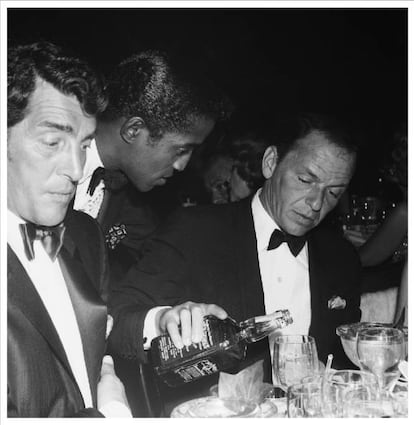
Hamill decided that, even without his friend’s help, he would finally write the story of the Hoboken singer: his own, totally subjective version of it. He had a lot of material. They had met on many occasions, sometimes without witnesses, and Sinatra had told him many things. Hamill, however, never intended to publish the classic “definitive biography” of Sinatra, with hundreds of pages of photos or dozens of interviews. Several of those already existed, and many more were to come. Rather, assuming that the reader already knew about Sinatra, he wanted to condense in a few strokes all of the artist’s many facets. He wanted to write a psychological portrait, more in the style of Goya than Velázquez.
This is how Why Sinatra Matters was born. The volume examines the background of the artist, born into a family of Italian immigrants; his first-hand experiences of racism, prohibition and World War II; and, of course, his musical and film career, lovers and scandals. For Hamill, Sinatra’s story can be condensed into three major themes: music, politics and love.
Music
Why does Sinatra matter? It was always clear to Hamill that music was the most important thing. In an interview with Charlie Rose in 1998, when the book was originally published, he explained: “There’s a variety of reasons, but I think the most important one of all is the music. The music is unique and original. There was no such music until he showed up. A lot of us have forgotten that. That music has been debased by its cheap imitators. That music was a music of urban America, the music made by the last generation of immigrants to this country, it became the sound of a certain part of the United States, and it became then the sound of a lot of parts of the world. It was a city sound more than anything else. It was not Hank Williams, and it was not Bob Dylan. It was different. But it was at least as valuable.”
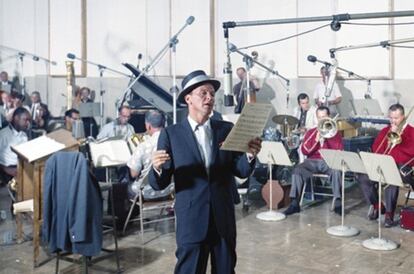
For Hamill, Sinatra inhabited his songs in the same way that great actors inhabit their characters. An only child and a staunch defender of his privacy, he became the poet of loneliness, an epidemic that, in his time, had begun to haunt millions of people around the world. Just like Marlon Brandon will always be Kowalski, his character in A Streetcar Named Desire (1951), Sinatra will always be the man alone in a bar at two in the morning, counting the quarters in his pocket and wondering if he will be able to find a taxi in the rain.
Politics
Sinatra was born in the United States in 1915 to Italian parents. At that time, racism towards Italian immigrants was in full swing. According to Hamill’s account, little Sinatra first realized it when he was five or six years old and suffered insults and racism in his own flesh. Keeping his last name became an act of resistance against xenophobia. When he started his career, singer Harry James suggested that Sinatra change his name to something less threatening to the establishment. “Why don’t you call yourself Frank Satin?” he asked. Sinatra rejected the proposal. “Can you imagine if I had changed it?,” he once said to Hamill, half annoyed and half amused. “Right now I would be singing on a cruise.”
One of Sinatra’s little-known facets is his political commitment, derived in part from his immigrant ancestry. It may come as a surprise, for example, that in his youth he sympathized and even donated to organizations like the National Association for the Advancement of Colored People. “It wasn’t just Black people hanging from the end of those fucking ropes,” Sinatra once told Hamill.
Some would never forgive him for his sympathies. Hamill attributes the rumors of his relations with the Mafia to racism. Sinatra always denied that the criminal organization helped his career, although he couldn’t deny that he knew many of its members, especially during his early days. “Sure, I knew some of those guys. I spent a lot of time working in saloons. And saloons are not run by the Christian Brothers,” he acknowledged to Hamill. “They said hello, you said hello. They came backstage. They thanked you. You offered them a drink. That was it.”
Love
Finally, one cannot talk about Frank Sinatra without mentioning his relationship with women. Married at age 24 to Nancy Barbato, with whom he had his three children, Hamill has no doubt that the great love of the singer’s life was Ava Gardner. His relationship with the actress was full of scandals and fights, breakups and reunions.
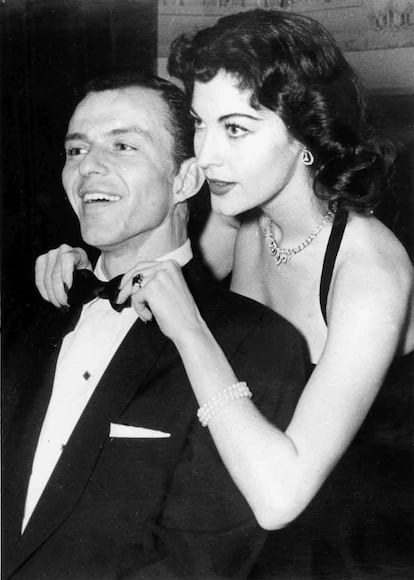
Although they separated in 1957, Sinatra, who for much of the 1950s was little more than “Ava Gardner’s husband,” never forgot her. Thanks in large part to the actress, he was restored to stardom: Gardner agreed to make a movie, From Here to Eternity (1953), for free, on the condition that Sinatra would play the role of Angelo Maggio. The role led him to win the Oscar and the Golden Globe for Best Supporting Actor. After those awards, he was signed to Capitol Records and went on to release some of his best albums: In the Wee Small Hours (1955), Songs for Swingin’ Lovers! (1956), Come Fly with Me (1958), Only the Lonely (1958), No One Cares (1959) and Nice ‘n’ Easy (1960).
In the interview with Charlie Rose, Hamill recalls an anecdote that confirms Sinatra’s love for Ava. “The only time I ever met Ava Gardner was in New York in the seventies,” he says. “She was this magnificent ruin, sort of like the Colosseum. She was drinking pretty hard. She went on a little bit about Sinatra. She had a terrific bad mouth, but an affectionate bad mouth. The place she was staying was Sinatra’s apartment at the Waldorf-Astoria, and it had been 15 years since they were divorced. So all the way to the end, Sinatra kept taking care of her when she was unemployable because of alcohol and other problems. He made sure she was not going to get into trouble.”
Hamill’s biography does not aspire to reveal all of Sinatra’s secrets, but rather to give an intimate portrait of the singer through the author’s recollections. In the book’s introduction, Hamill recalls their conversations thus: “Like all great artists, Frank Sinatra contained secret places, abiding personal mysteries, endless contradictions. On occasion, a curtain would part, there would be a moment of epiphany, and I could see the uncertain older man who wanted to understand what it all meant, the man who said that dying was a pain in the ass. I liked that man very much.”
Sign up for our weekly newsletter to get more English-language news coverage from EL PAÍS USA Edition
Tu suscripción se está usando en otro dispositivo
¿Quieres añadir otro usuario a tu suscripción?
Si continúas leyendo en este dispositivo, no se podrá leer en el otro.
FlechaTu suscripción se está usando en otro dispositivo y solo puedes acceder a EL PAÍS desde un dispositivo a la vez.
Si quieres compartir tu cuenta, cambia tu suscripción a la modalidad Premium, así podrás añadir otro usuario. Cada uno accederá con su propia cuenta de email, lo que os permitirá personalizar vuestra experiencia en EL PAÍS.
¿Tienes una suscripción de empresa? Accede aquí para contratar más cuentas.
En el caso de no saber quién está usando tu cuenta, te recomendamos cambiar tu contraseña aquí.
Si decides continuar compartiendo tu cuenta, este mensaje se mostrará en tu dispositivo y en el de la otra persona que está usando tu cuenta de forma indefinida, afectando a tu experiencia de lectura. Puedes consultar aquí los términos y condiciones de la suscripción digital.
More information
Archived In
Últimas noticias
Most viewed
- Sinaloa Cartel war is taking its toll on Los Chapitos
- Oona Chaplin: ‘I told James Cameron that I was living in a treehouse and starting a permaculture project with a friend’
- Reinhard Genzel, Nobel laureate in physics: ‘One-minute videos will never give you the truth’
- Why the price of coffee has skyrocketed: from Brazilian plantations to specialty coffee houses
- Silver prices are going crazy: This is what’s fueling the rally
